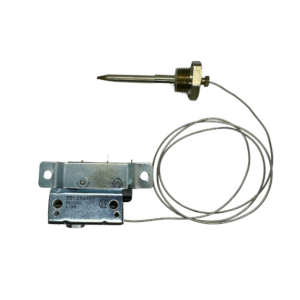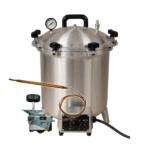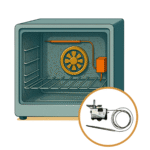
High-demand chiller applications, such as refrigeration units, often face frost buildup. Overworking these systems leads to ice formation, reducing efficiency and increasing maintenance needs. Many units use advanced chiller thermostats, specifically capillary thermostats, to ensure precise refrigeration control and prevent frost.
How a Capillary Thermostat Enhances Refrigeration Control
Stemco capillary thermostats maintain precise temperature control within chiller systems. These thermostats use an external sensor bulb to monitor temperature. When the temperature drops to a set threshold, the thermostat contacts open, shutting down the compressor and preventing further cooling. This action stops frost formation. Once the temperature stabilizes and the frost dissipates, the thermostat contacts close, reactivating the compressor. For more information on our line of thermostats, visit the product page.
Integration of Secondary Chiller Thermostats
Some chiller setups use a secondary thermostat, typically another capillary thermostat, for enhanced efficiency and protection. This secondary thermostat prevents the chiller or compressor from operating under specific conditions. For instance, an air conditioning system may use a secondary thermostat to stop compressor activity when the outdoor temperature falls below 50°F, protecting the equipment from damage and inefficiency.
 Advantages of a Stemco Capillary Thermostat in Refrigeration Control
Advantages of a Stemco Capillary Thermostat in Refrigeration Control
Stemco capillary thermostats offer several technical advantages. Our thermostats include ambient temperature compensation, ensuring accurate readings and reliable performance in various environmental conditions. Key benefits include:
- Versatility: Suitable for a wide range of high-limit applications.
- High Current Capacity: Manages up to 25 amps.
- Extensive Temperature Range: Operates between 0°F and 700°F.
- Robust Ambient Temperature Tolerance: Withstands conditions up to 250°F.
Ourcapillary thermostats provide reliable frost prevention, maintain system performance, and enhance the longevity of chiller systems in refrigeration and air conditioning applications.
Related posts:
 Mastering Temperature Control in Deep Fryers: The Role of Capillary Thermostats
Mastering Temperature Control in Deep Fryers: The Role of Capillary Thermostats
 Capillary to Exhibit at 2024 AHR Expo in Chicago, IL
Capillary to Exhibit at 2024 AHR Expo in Chicago, IL
 Bulb & Capillary Thermostats for Electric Sterilizer Temperature Control
Bulb & Capillary Thermostats for Electric Sterilizer Temperature Control
 Bulb and Capillary Thermostats in Convection Ovens: Accurate Control and High-Limit Protection
Bulb and Capillary Thermostats in Convection Ovens: Accurate Control and High-Limit Protection